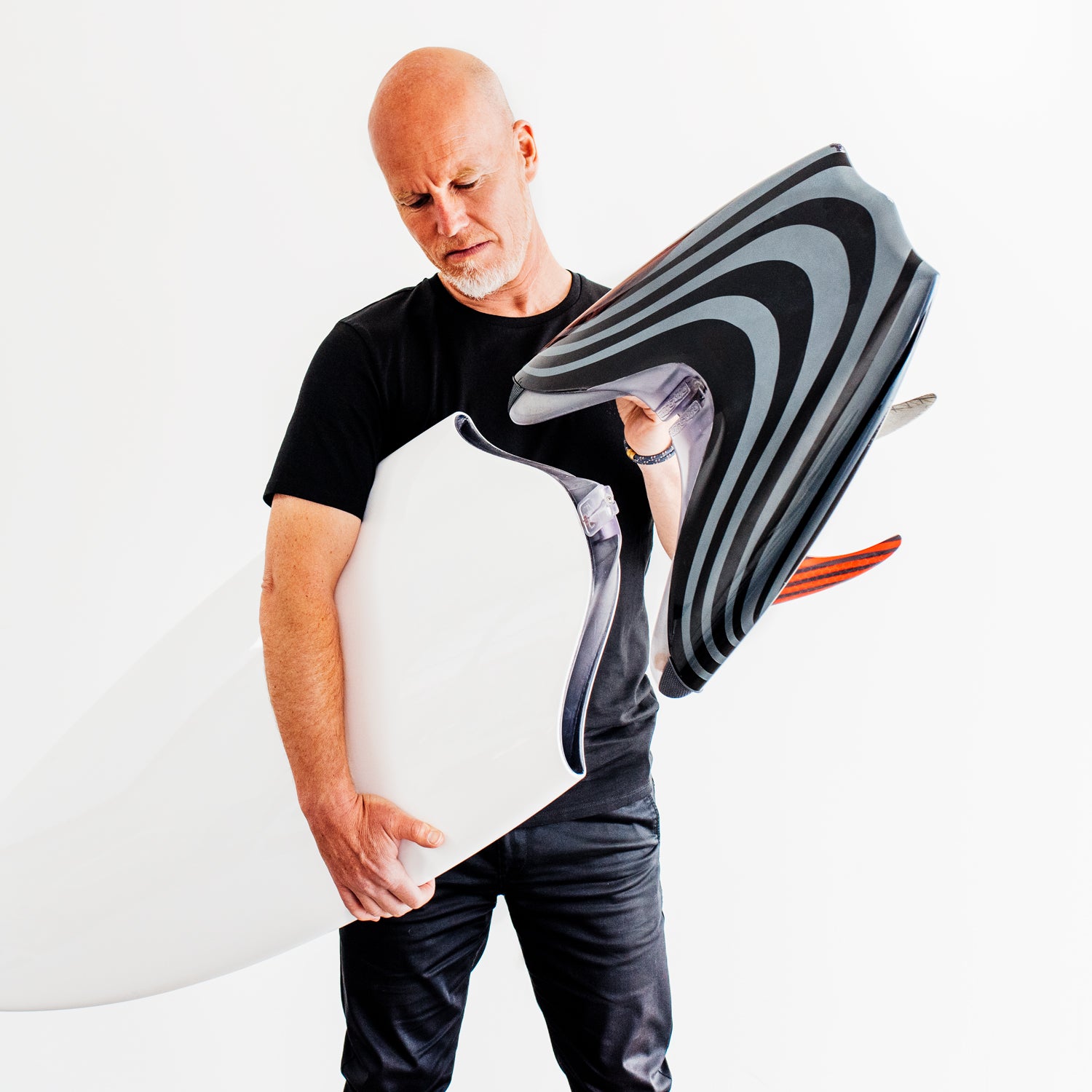When the word “travel” appears anywhere near a piece of outdoor gear it usually denotes compromise. Miniature travel toothbrushes. Downsized travel guitars. Folding travel bicycles. Yes, they get the job done, but not nearly as well as non-travel versions.
Thus, acclaimed designer Thomas Meyerhoffer prefers the word “adventure” when describing his latest surfboard, the 2PRT. His creation splits in two just above the fins to help it pack down for airplanes and buses. But more importantly, the split also makes it modular. Users can combine various nose and tail styles to create the perfect board for all kinds of conditions. Surfers of varying skills and preferences can mix and match nose and tail options to take it from a thruster to a fish to a pintail longboard with ease.
The 2PRT is hardly the first travel-minded board. For a short period of time, Walden sold the , but it never seemed to take off and is no longer offered. and offer segmented surfboards, but both designs require tube inserts and either bolts or clamps to keep everything from falling apart. Meanwhile, the 2PRT uses a slick and simple system where a key loosens a latch that pops up to separate the two ends. Total setup time: 30 seconds tops.
My first test was last week at , half an hour south of San Francisco, and the biggest compliment I can pay the 2PRT is that I didn’t notice much of a difference from my everyday one-piece boards. It floated and rode like a typical, well-built surfboard instead of some weird Frankenstein creation. When pressing down on the tail, I couldn’t see or feel any separation between the two sections—and I’m a big guy at six-foot-three and 215 pounds. I also had zero issues with balance, dropping in, or pulling off quick turns.
The tester I rode in knee-to-chest-level waves had an epoxy nose and tail. Buy during our post-surf discussion, Meyerhoffer showed me his show board, which is a mix of traditional epoxy for the nose and a carbon fiber tail. Meyerhoffer’s plan is to custom build board sections for each buyer, depending on their needs.
Surfers who travel a lot will love how well the board breaks down. In fact, Meyerhoffer has already designed a golf-style bag that fits two noses and two tails and won’t cost you extra airline baggage fees. (Checking a surfboards runs runs between $75 and $150.) You can also toss the system in the backseat of your Mini when grabbing a few waves before work.
Even if you’re not prone to taking surf trips to Baja or Indo, the 2PRT is worth considering since it allow for a lot of experimentation and adaptability. It can be set up for nearly any kind of wave, which means you can invest in one board instead of a quiver.
If all goes to plan, Meyerhoffer will offer preorders of the 2PRT this December. It will be available through , and a custom board with one nose and two tails will cost around $1,600, depending on options.


